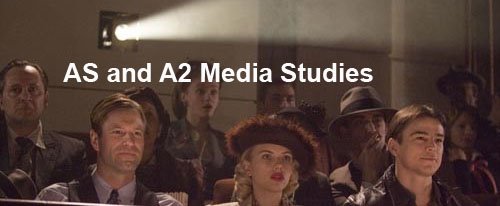Wikis
A great wiki with useful background information on this TV drama's characters, for instance, ages, progenies, etc. There's also a run-down of a myriad of terms explained which make up the programs cultural "reality."
http://trueblood.wikia.com/wiki/Vampire#Life_Span
HBO's website for True Blood
http://www.hbo.com/true-blood/index.html
The "Original" Fansite - great links
http://true-blood.net/
Links to the "best True Blood websites."
http://www.daemonstv.com/2009/08/08/best-true-blood-websites/
True Blood's facebook page
http://www.facebook.com/TrueBlood
Information Archive
http://true-blood.tv/Videos/Videos.html
http://americanvampireleague.com/
Poster analysis
http://www.scribd.com/doc/21385064/True-Blood-Analysis-Poster
On HBO's viral advertising for the show
http://www.buddytv.com/articles/true-blood/hbo-kicks-things-up-with-true-21673.aspx
Writer, Alan Ball's script for the pilot episode
http://leethomson.myzen.co.uk/True_Blood_1x01_-_Strange_Love.pdf
The controversial allusions in the show
http://www.associatedcontent.com/article/5724596/true_blood_addresses_controversial.html
Articles
There are several intelligent ones here, with comments from viewers
http://www.slate.com/id/2256893/landing/1/
This one states that True Blood and Mad Men are both melodramas and similar to soap operas.
http://blog.japhygrant.com/2010/08/29/true-blood-and-mad-men-are-the-same-damned-show/
Essays
Interesting for the argument against reading this text as being post modern. The writer thinks True Blood is hypermodern and not post modern. Do you agree? Hypermodernity is also called "supermodernity."
http://www.inter-disciplinary.net/wp-content/uploads/2010/04/lcurraspaper.pdf
Here's what hypermodernity means and how to apply it to texts.
http://en.wikipedia.org/wiki/Hypermodernity
The origins of the theory of hypermodernity
http://www.ctheory.net/articles.aspx?id=133
The revolutionary mobile ad campaign with a must-see video. This raised audience figures by 38%! Film marketing is following a similar route.
http://www.mobilemarketer.com/cms/news/advertising/6855.html
The show's opening credits were made specifically by Digital Kitchen. The You Tube video below also features the show's closing credits.
These two sites offer an analysis of the opening credits
http://criticalcommons.org/Members/ironman28/clips/trueBloodTitleSequence.mov/view
An analysis of the opening sequence from (a student?) at Northallerton College: http://mediaweb.northallertoncollege.org.uk/mediablogs/lucyhart/2010/03/17/analysis-of-true-blood/
This was taken from Wikipedia on the show's opening title sequence:
Title sequence
True Blood's Emmy-nominated title sequence was created by Digital Kitchen, a production studio that was also responsible for creating the title sequence of Six Feet Under and Showtime's Dexter. The sequence, which is primarily composed of portrayals of the show's Deep South setting, is played to "Bad Things" by Jace Everett.[13]
Conceptually, Digital Kitchen elected to construct the sequence around the idea of "the whore in the house of prayer"[14] by intermingling contradictory images of sex, violence and religion and displaying them from the point of view of "a supernatural, predatory creature observing human beings from the shadows ..."[13] Digital Kitchen also wished to explore ideas of redemption and forgiveness, and thus arranged for the sequence to progress from morning to night and to culminate in a baptism.[14]
Most of the footage used in the sequence was filmed on location by Digital Kitchen. Crew members took a four-day trip to Louisiana to film and also shot at a Chicago church and on a stage and in a bar in Seattle.[14]Additionally, several Digital Kitchen crew members made cameo appearances in the sequence.
In editing the opening, Digital Kitchen wanted to express how "religious fanaticism" and "sexual energy" could corrupt humans and make them animalistic. Accordingly, several frames of some shots were cut to give movements a jittery feel, while other shots were simply played back very slowly. Individual frames were also splattered with drops of blood.[14] The sequence's transitions were constructed differently, though; they were made with a Polaroid transfer technique. The last frame of one shot and the first frame of another were taken as a single Polaroid photo, which was then divided between emulsion and backing. The emulsion was then filmed being further separated by chemicals and those shots of this separation were placed back into the final edit.[13]
Eight different typefaces, inspired by Southern road signage, were also created manually by Camm Rowland for cast and crew credits, as well as the show's title card.[14]
In a 2010 issue of TV Guide, the show's opening title sequence ranked #5 on a list of TV's top 10 credits sequences, as selected by readers.[15]
The Six Mini Episodes before Season 3
A recent innovation has been the mini episodes, made to create interest in new audiences and keep old ones satisfied before Season 3. There were six episodes of 3-5 minutes long; each one focusses on particular characters in the series. Some have adult content. Here's the final one featuring Jason Stackhouse, a character not known for his intellect.
In another mini episode Eric The Northman (the Sheriff of Louisiana) and his "progeny," Pam, look for a dancer for their nightclub, Fangtasia.




No comments:
Post a Comment